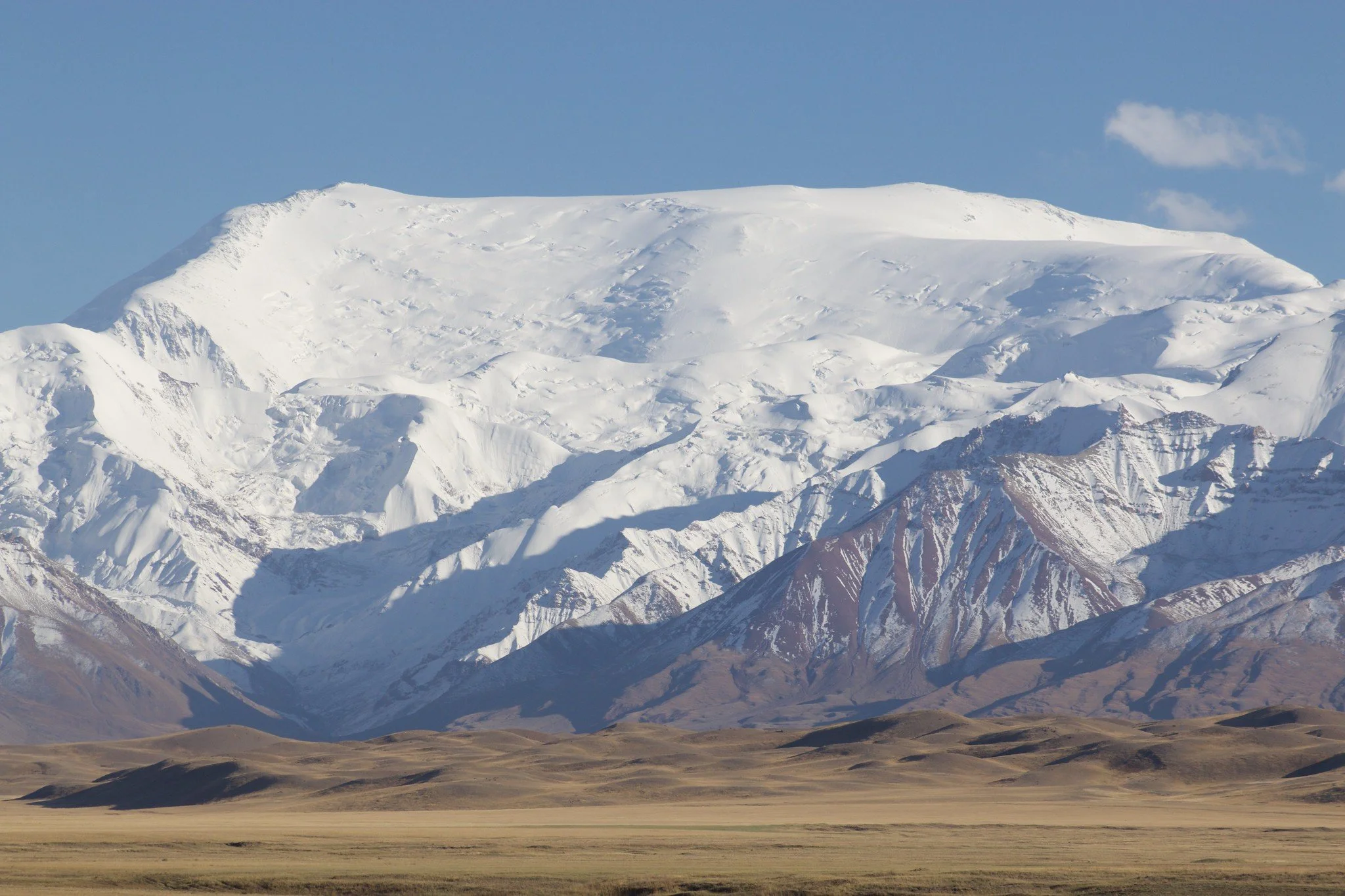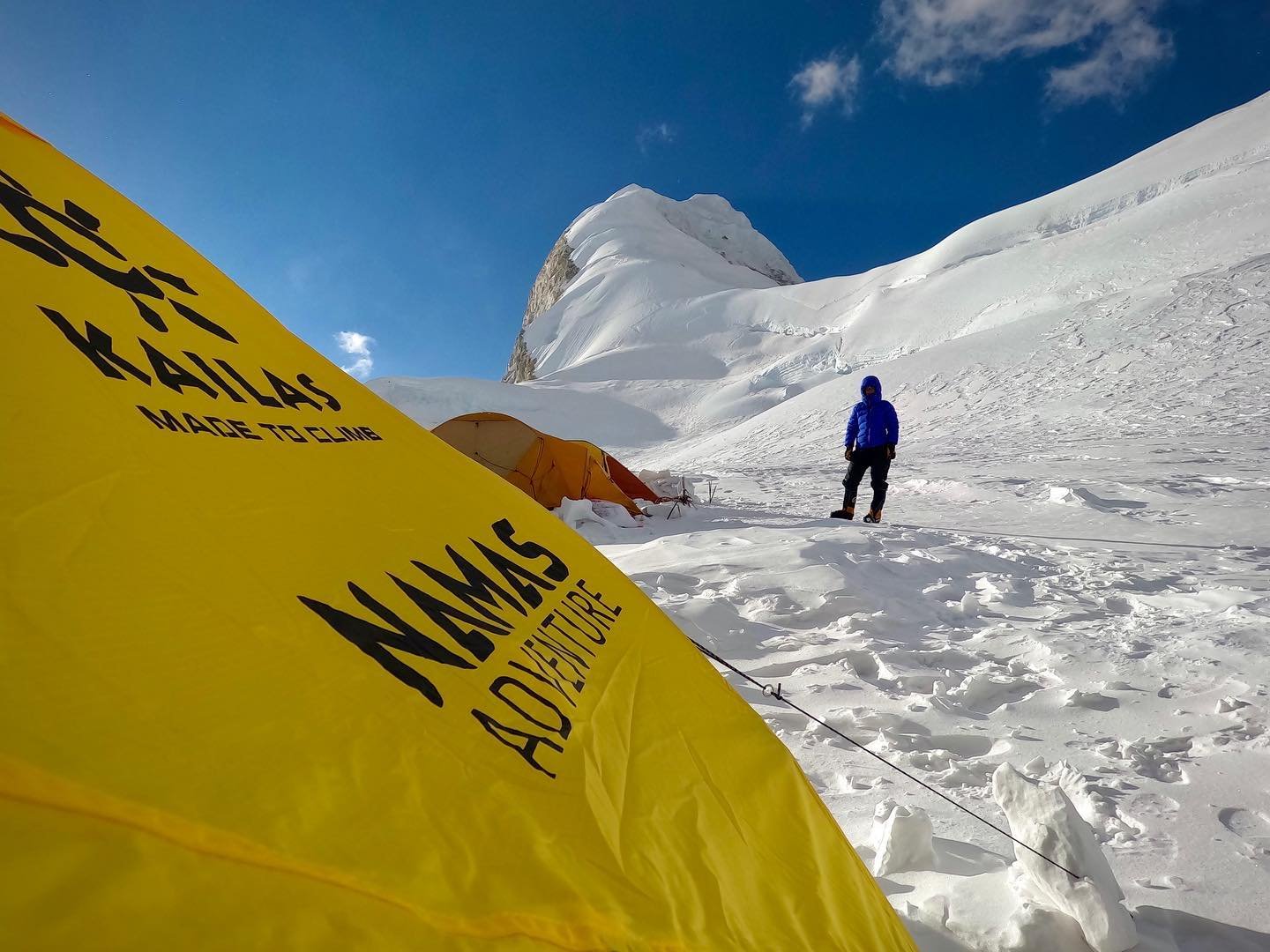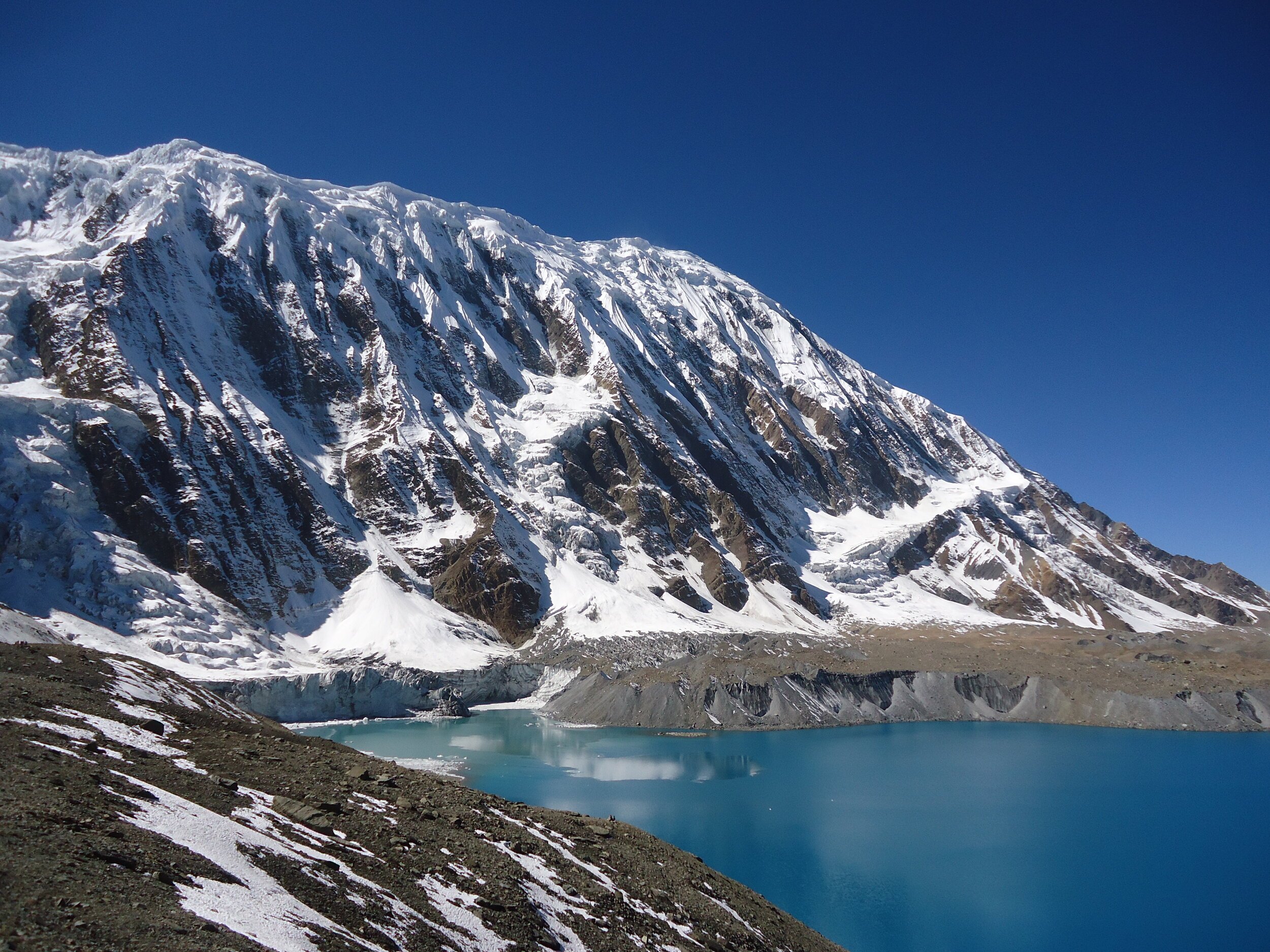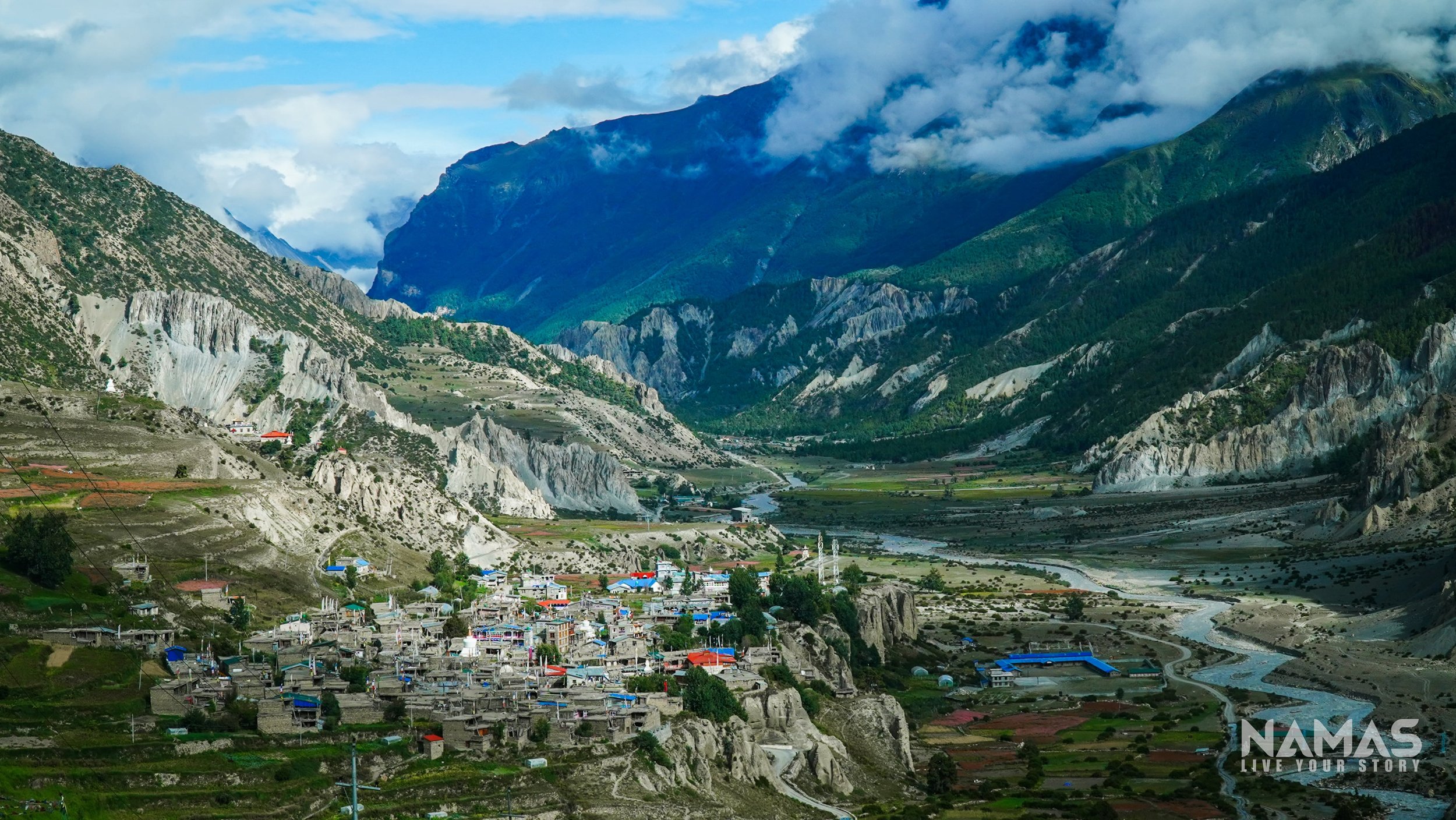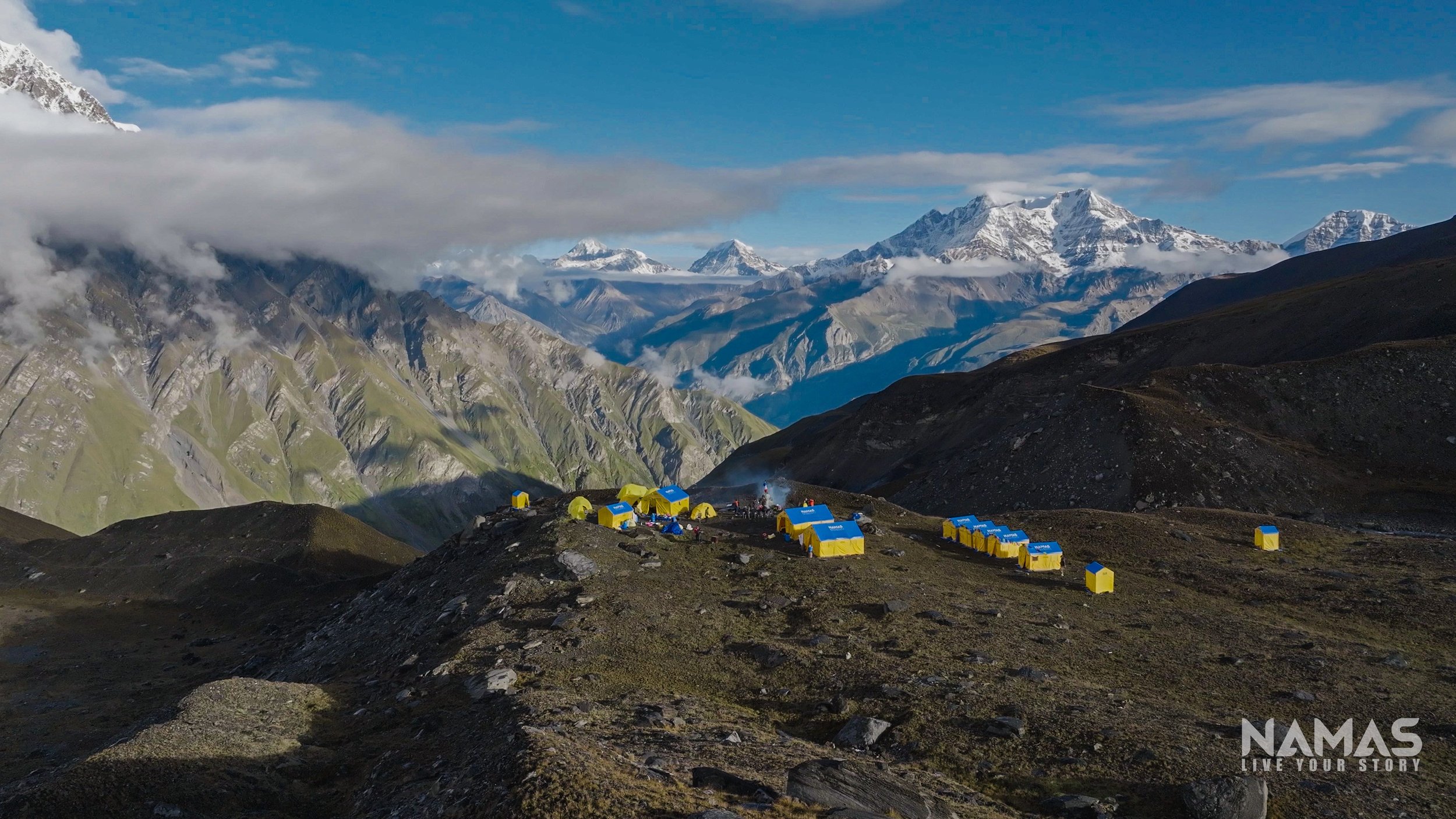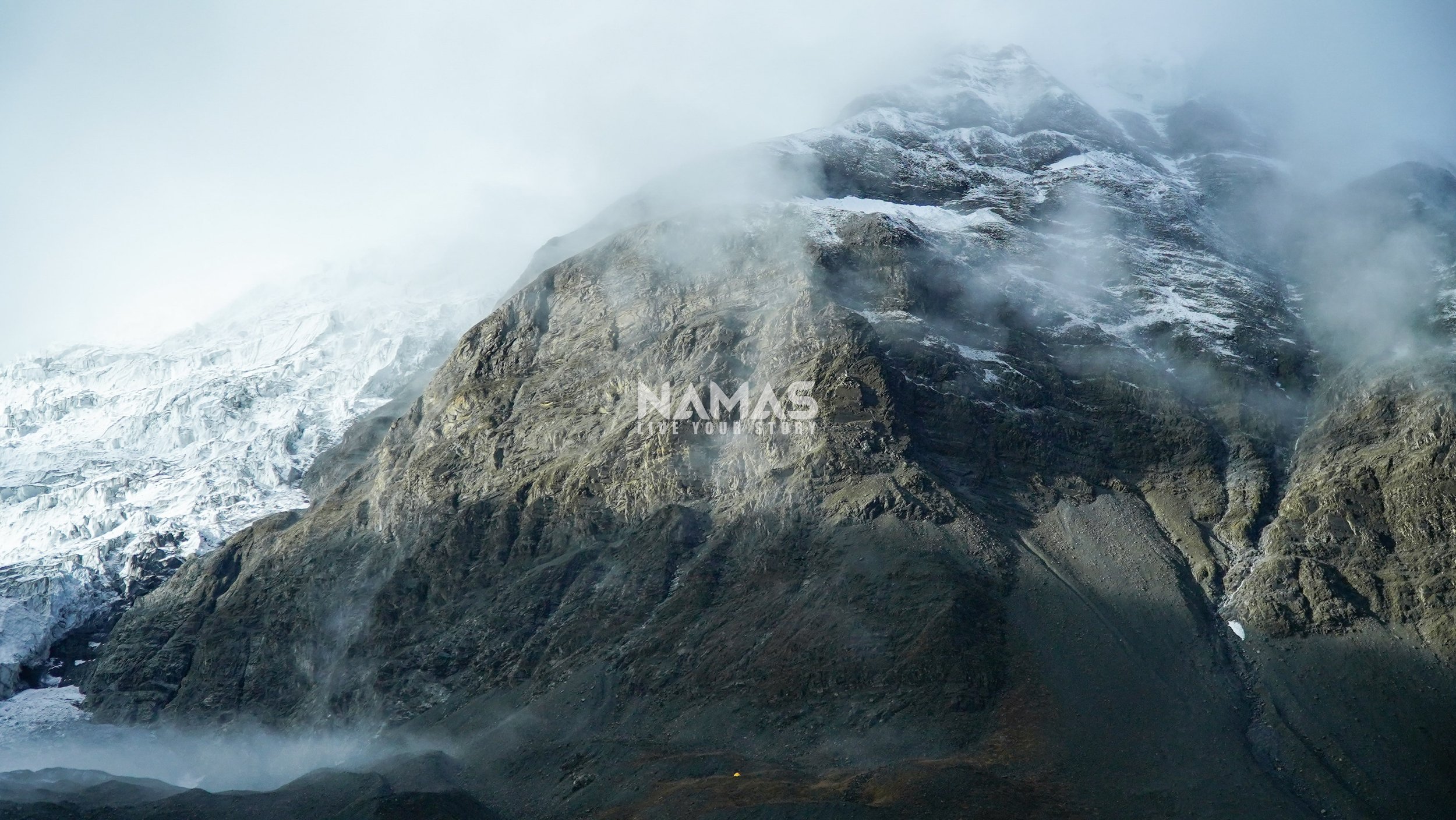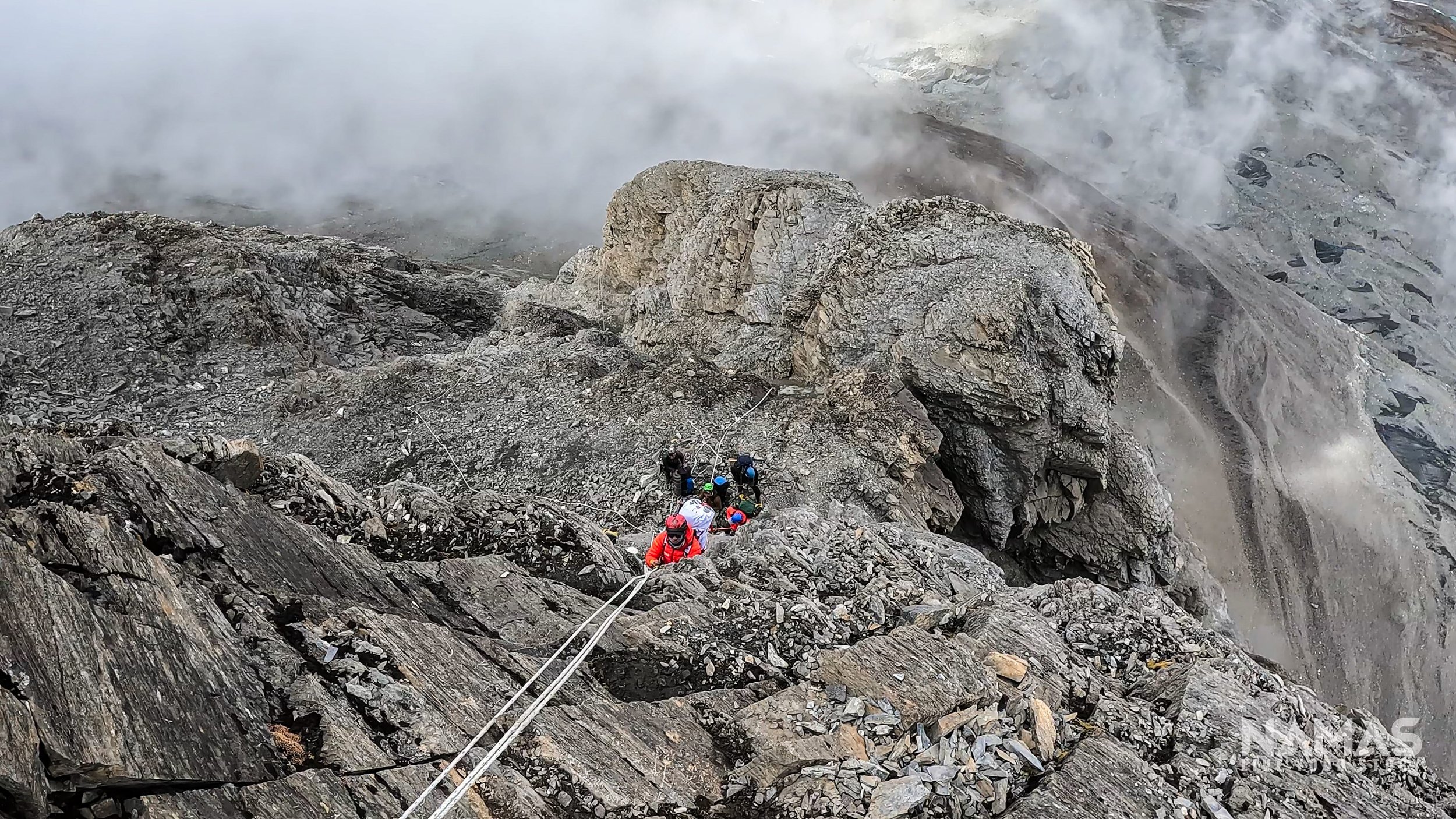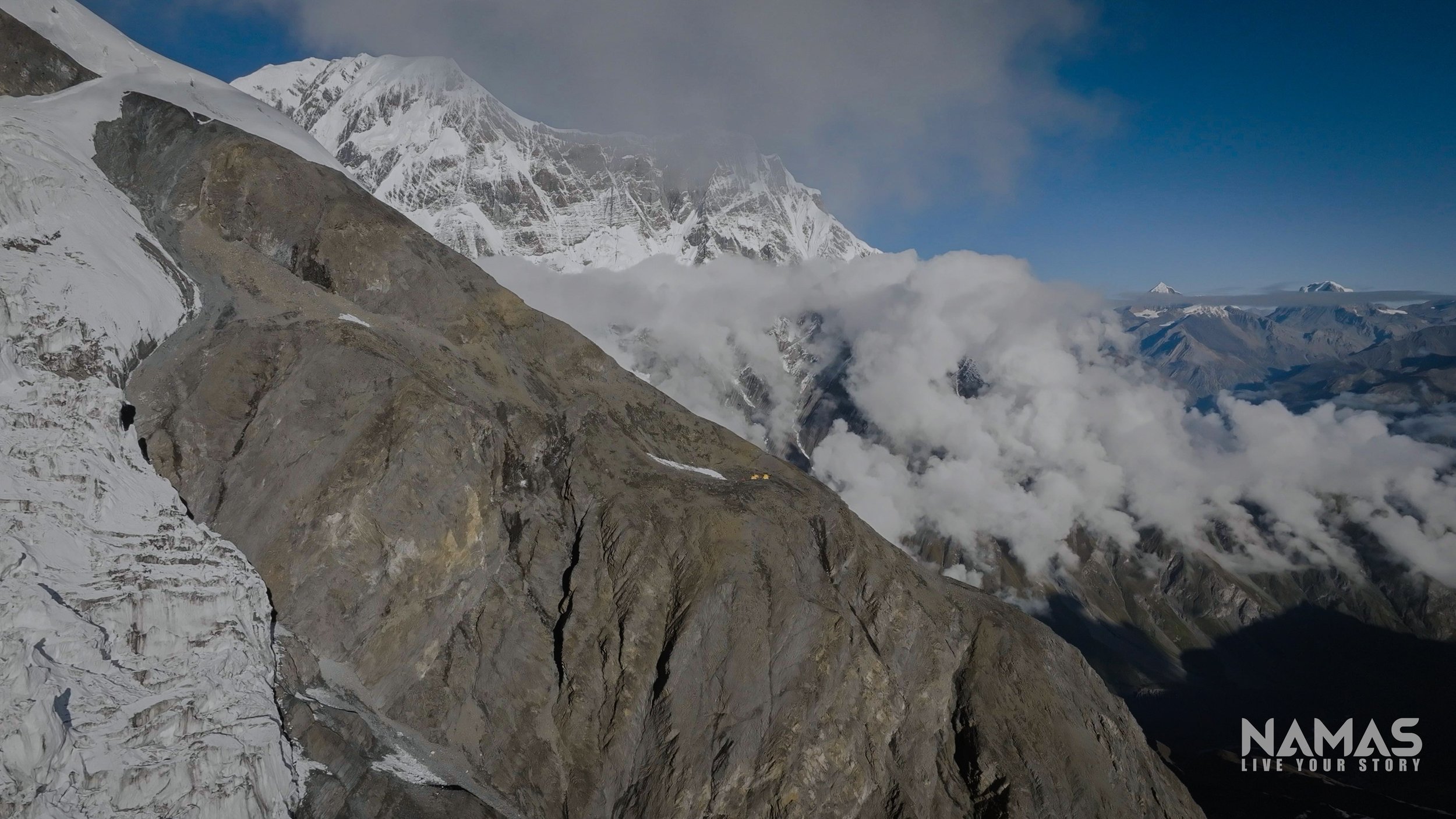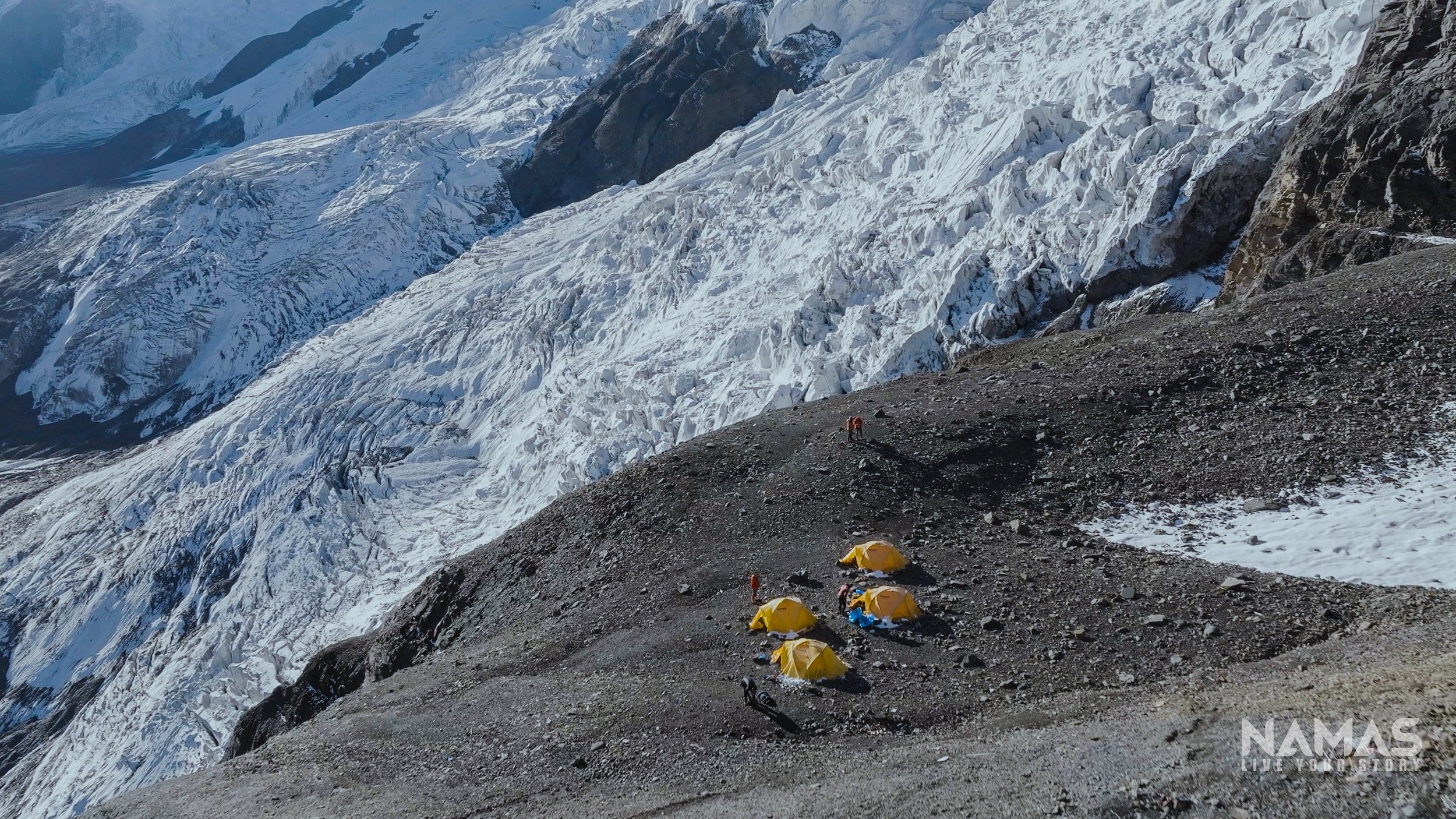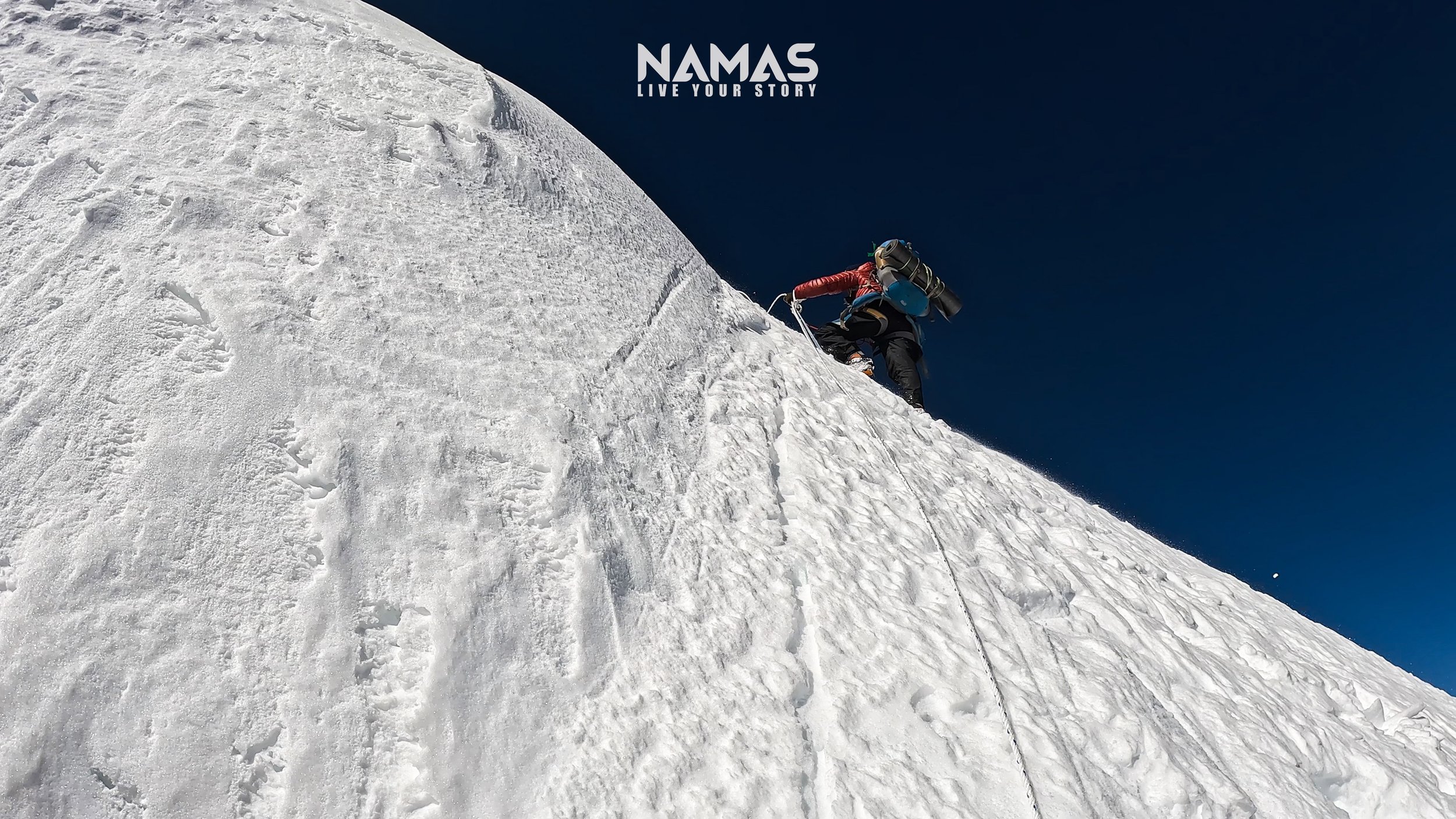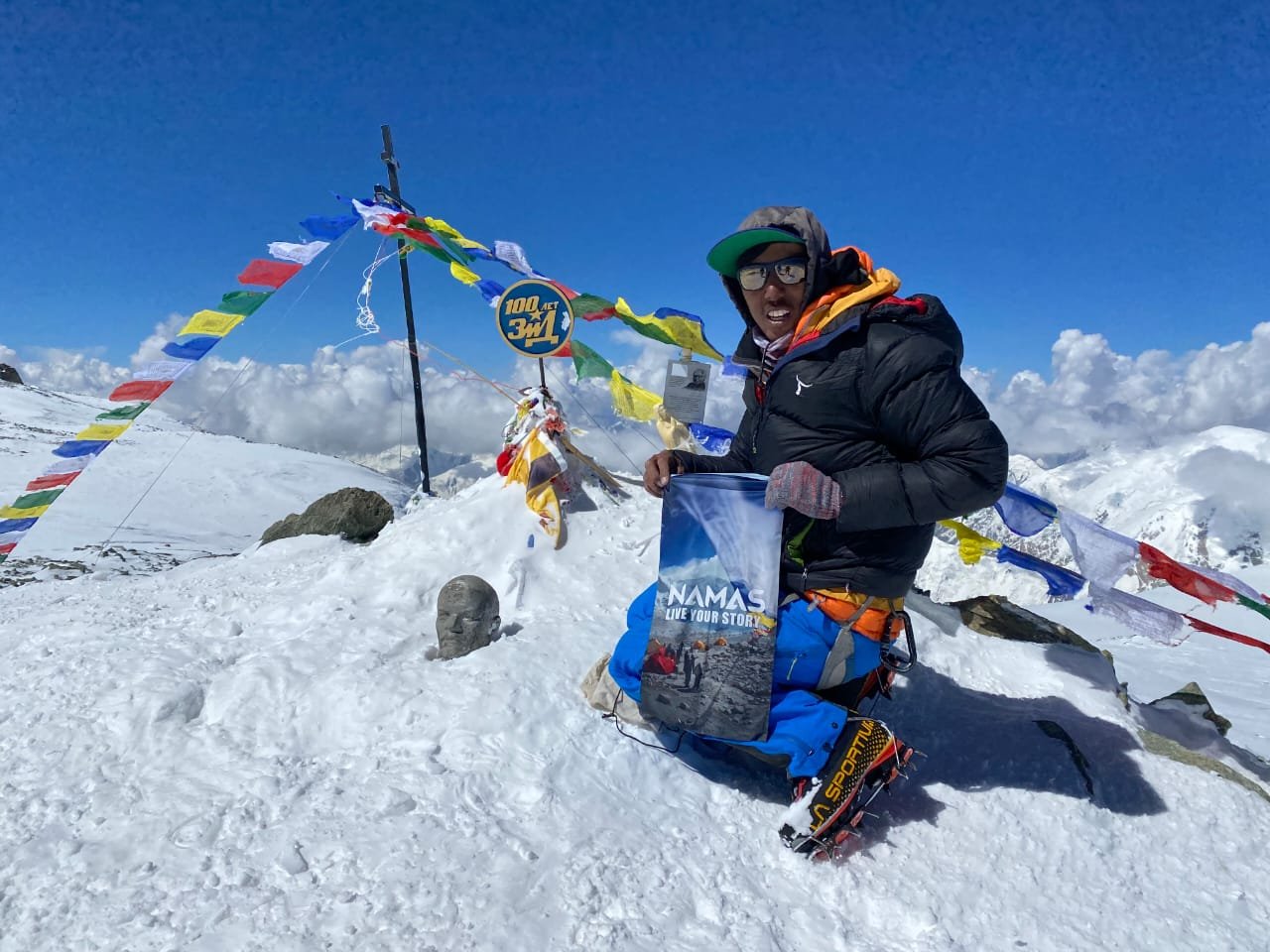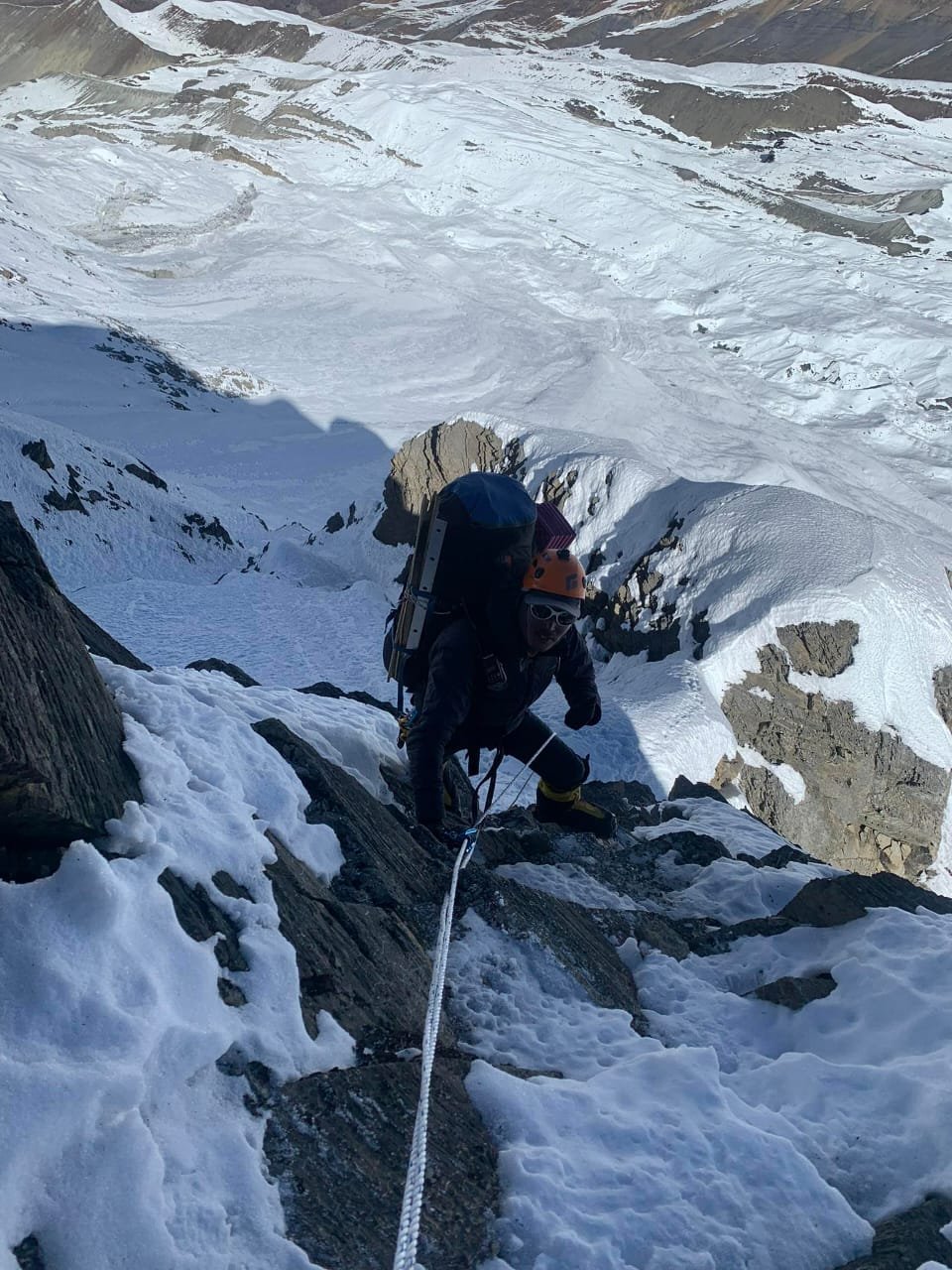Comparing 7000M Peaks: Which One is Right for Your Next Expedition?
Annapurna IV 7525M summit seen in the middle with Annapurna 2 on the left.
Perhaps you have completed several 4,000m to 6,000m summit expeditions and are now seeking a greater challenge. You might be exploring 7,000m mountains to enhance your high-altitude mountaineering experience, with aspirations of climbing Everest or one of the other 8,000m peaks. Alternatively, you may simply wish to immerse yourself in the pure exploration and remoteness that these high-altitude adventures offer.
Unsure on which 7000M peak to choose? In this blog post, we compare five prominent 7,000m mountain expeditions—Annapurna IV 7525M, Baruntse 7129M, Tilicho Peak 7134M, Himlung Himal 7126M, and Lenin Peak 7134M—to help you make an informed decision for your high-altitude journey.
1. Annapurna IV (7,525m)
Location: Annapurna Range, Nepal
Level: Advanced level
Technical Difficulty: High
Best Time to Climb: Spring (April-May) and Autumn (September-October)
Duration: 30 days
Key Features: Annapurna IV is a remote and lesser-climbed peak in the Annapurna range, known for its technical challenges. Climbers must have advanced skills in rock and ice climbing, as the route includes steep sections, exposed ridges, and deep snow. The peak's isolation offers a more immersive and adventurous experience, but it also demands excellent logistical planning. With only about 150 people ever reaching the summit, Annapurna IV is ideal for seasoned mountaineers seeking a quieter climb.
P.s. - Annapurna IV can be your expedition to prepare for Everest, Annapurna 1 or K2 expeditions.
Pros: Quieter, remote, and ideal as preparation for Everest or technical 8000m peaks.
Cons: Avalanche risk, technical sections, and steep terrain make it unsuitable for beginners.
2. Baruntse (7,129m)
Location: Barun Region, Nepal
Level: Intermedaite level
Technical Difficulty: Moderate to High
Best Time to Climb: Autumn (October-November)
Duration: 24 days
Key Features: Baruntse sits between the Everest and Makalu ranges, offering breathtaking views of both. It is popular among climbers preparing for lower 8000m peaks like Manaslu 8163M or Cho Oyu 8201M. The ascent becomes more technical after 6900m, particularly along the exposed summit ridge, which requires climbers to stay focused under challenging conditions. It’s a solid test for intermediate climbers who are ready for more demanding expeditions.
Pros: A great option for climbers seeking a moderate technical challenge before moving to 8000m peaks.
Cons: Exposed summit ridge demands advanced skills and leaves little room for error.
3. Tilicho Peak (7,134m)
Location: Annapurna Range, Nepal
Level: Intermedaite level
Technical Difficulty: High
Best Time to Climb: Spring (April-May) and Autumn (October-November)
Duration: 25-30 days
Key Features: Tilicho Peak offers a dramatic climb above Tilicho Lake, the highest lake in the world at 4900m. Though less famous than other Annapurna peaks, Tilicho is a technically demanding climb with steep rock scrambling, snow, and ice conditions at higher altitudes. This peak is for experienced climbers who have strong mountaineering skills and the endurance to navigate long, steep sections. Due to its remoteness, logistical planning is crucial, and only experienced teams should attempt this climb.
Pros: Stunning, remote, and less crowded with incredible views.
Cons: Requires advanced technical skills and careful planning due to the isolation.
4. Himlung Himal (7,126m)
Location: Manaslu Region, Nepal
Level: Entry level
Technical Difficulty: Moderate
Best Time to Climb: Autumn (September-October)
Duration: 25-30 days
Key Features: Himlung Himal offers a more moderate challenge, making it an excellent choice for climbers looking for an introduction to 7000m expeditions. The route to the summit is non-technical, consisting mainly of steady snow slopes and moderate crevasses. It’s a great option for those with limited experience who want to test themselves at high altitudes without the intense technical demands of other peaks.
Pros: Suitable for less experienced climbers with a straightforward route.
Cons: May not appeal to those seeking a more rugged, technical challenge.
5. Lenin Peak (7,134m)
Location: Pamirs, Kyrgyzstan/Tajikistan
Level: Entry level
Technical Difficulty: Moderate
Best Time to Climb: Summer (July-August)
Duration: 21-24 days
Key Features: Lenin Peak is one of the most accessible 7000m peaks, attracting many first-time high-altitude climbers. Its long, glaciated slopes offer a relatively straightforward ascent with minimal technical sections, but the altitude is still a serious challenge. Climbers must be well-acclimatized to avoid altitude sickness, and the unpredictable weather—particularly strong winds—adds another layer of difficulty.
Pros: Ideal for beginners seeking a high-altitude challenge without intense technical demands.
Cons: Crowded during peak season, with risks associated with altitude and harsh weather.
Comparison Summary
Which Peak is Right for You?
For Advanced Climbers: If you're looking for a highly technical challenge, Annapurna IV and Tilicho Peak are your best options. These peaks offer steep routes with plenty of rock and ice climbing, perfect for climbers with significant experience and no interest in crowded routes.
For Intermediate Climbers: Baruntse provides a good balance between moderate and challenging sections, making it a solid choice for those with some technical skills who are preparing for lower 8000m peaks.
For Beginners: Himlung Himal and Lenin Peak are great for climbers who are new to 7000m expeditions and want to experience the challenge of high-altitude mountaineering without the intense technical difficulties of other peaks.
Choosing the right peak depends on your experience, skill level, and what you want to achieve. Whether you’re aiming for a quiet, immersive climb on Annapurna IV or looking for an accessible, non-technical adventure on Lenin Peak, there’s a 7000m peak out there for you.
For more details on these expeditions and to plan your next adventure, visit our 7000M expedition page.
NAMAS Adventure
Intermediate level 7000M+ Mountaineering Expeditions - Namas Adventure
In this article, we aim to introduce you to the thrilling world of 7000-meter intermediate-level expeditions. These remote climbs offer a unique blend of adventure, challenge, and joy, with fewer summits compared to their higher counterparts. A perfect mission for intermediate-level climbers, these expeditions provide an exciting opportunity to push your limits and conquer towering peaks. While 7000-meter peaks may not boast the same bragging rights as 8000-meter summits, they offer a special experience for those who seek pure joy in thin-air alpine challenges and push themselves to extreme altitudes. Whether you're testing your skills or simply marveling at the wonders of nature, embarking on a 7000-meter expedition promises an exhilarating journey filled with excitement and achievement. Below, we'll explore some of the best intermediate-level 7000M peaks that we've had the privilege of exploring, providing you with valuable information to help you plan your next adventure. We look forward to the opportunity to serve you on any expedition you choose to embark on.
Note - We will continue to expand and update our list of peaks as we explore more 7000-meter peaks in the years to come.
First on the list for intermediate 7000-meter-plus peak is Mount Baruntse. Standing at 7129 meters, Baruntse is conveniently located between the Khumbu region and the towering peak of Makalu (8646m). Mera Peak (6476m) serves as an excellent acclimatization peak before tackling Baruntse, and it can also be accessed via the Ampahu Lhabtas pass (5800m). The climb itself involves setting up two high alpine camps, with relatively fewer objective dangers, offering climbers a high success rate. Most successful summit attempts occur during the autumn season climb.
Pre-requisite requirements include climbing experience on peaks such as Lobuche East and Island Peak, Chulu West, Khumbu Three Peaks or Annapurna Three Peaks, Alpamayo, Mont Blanc, Zermatt, or other similar-grade mountains. These experiences will help prepare climbers for the challenges of Mount Baruntse.
Be ready for a very cold base camp.
Tilicho Peak, standing at an impressive 7134 meters, presents a thrilling yet fulfilling challenge for climbers seeking technical ascents in the 7000-meter peak range. The journey begins with a scenic trek through the Annapurna circuit, leading to the stunning Tilicho Lake, the highest lake in the world at an elevation of 4910 meters.
Located north of Manang in the Annapurna Region, Tilicho Peak boasts a majestic northeast ridge covered in snow, offering panoramic views of the high Kali Gandaki valley to the west and the Marshyangdi Valley to the east. Nearby lies the mystical land of Mustang to the north.
To undertake this adventure, climbers should meet certain prerequisites, such as experience on peaks like Alpamayo, Khumbu Three Peaks, or Annapurna Three Peaks, Himlung Himal and have mixed climbing grade 2-3 or ice climbing experience WIII-IV.
The standard climbing route follows the northwest shoulder, with Base Camp situated at 4800 meters at the lake's northwest end. With fewer climbers in the Annapurna mountain range, adventurers can enjoy the breathtaking landscape almost exclusively to themselves.
KHAN TENGRI 7439M
Khan Tengri 7439M, is located in Kazakhstan (highest peak). This breathtaking mountain falls on the Tien Shan mountain range of Central Asia (boundaries between Kazakhstan, Kyrgyzstan, and the Uygur Autonomous Region of Xinjiang, China), Khan Tengri offers an exhilarating challenge for intermediate climbers seeking an unforgettable adventure.
Pre-requisite requirements for this expedition include, Lobuche East & Island Peak, Khumbu 3 Peak or Annapurna 3 Peak, Alpamayo, Himlung Himal or expeditions with similar grades
Climbing Khan Tengri presents a unique set of challenges, blending technical skill with physical endurance. This expedition is also known for gaining altitude rapidly and objective dangers of avalanches are higher too making it one of the peaks with at least 7000M summits with the amount of climbers at the peak each season. Aspiring climbers should expect to navigate steep slopes, crevasses, and changing weather conditions. The weather in Khan Tengri is known for its notorious nature and is unpredictable, with temperatures dropping drastically and strong winds posing additional obstacles. However, with proper preparation and guidance, climbers can overcome these challenges and reach the summit.
Conclusion
Embarking on a 7000-meter intermediate expedition is a journey filled with challenge, adventure, and personal growth. Each of these peaks presents formidable sets of mixed challenges, combining technical prowess with classic mountaineering skills, all while demanding both physical and mental resilience. From the towering peaks of Baruntse to the technical ascents of Tilicho Peak, every expedition offers climbers the opportunity to push their limits and conquer remarkable heights.
As we continue to explore more peaks and expand our experiences, we eagerly anticipate sharing more adventures with you. Whether you're drawn to the thrill of high-altitude climbing or simply captivated by the beauty of the world's tallest mountains, there's an expedition waiting for you.
We embark on select peaks yearly and would be honored to have the chance to take you on one of these remote and less summited expeditions. Together, we can create unforgettable memories and face the challenge of the mountains, discovering just how far you can push yourselves and leveling up for even greater adventures. Dream big, prepare diligently, and let's make this climb together.
Let's go, LIVE YOUR STORY
Climbers Guide: Annapurna IV or Annapurna 4, 7525M
MOUNTAIN OVERVIEW
Name: Annapurna IV or Annapurna 4 (Link)
Elevation: 7525M/24688FT
Co-ordinates: 28°32′15″N 84°4′58″E
Crowd level: Minimum (Spring/Autumn, 0 - 20)
Difficulty grading: TD+/4 (Alpine/Fitness grading info)
Location: Annapurna region. Humde, Manang.
Parent Mountain: Annapurna massif
Acclimatisation Rotation: 1 rotation
Camps: 4 high camps
Summits: 1 Fore Summit / 1 Main Summit
Country: Nepal
ABOUT THE MOUNTAIN
Annapurna IV, standing at 7,527 meters, presents an ideal mountaineering challenge for climbers seeking a rewarding ascent with manageable technical requirements. Situated within the renowned Annapurna massif range, it occupies a prominent position between Annapurna II (7,937 meters) to the west and Annapurna III (7,555 meters) to the east.
Unlike its neighboring peaks, Annapurna IV offers a climbing route with fewer inherent dangers and a semi-technical nature, making it accessible to climbers with moderate experience levels. Within the Annapurna massif range, it is recognized as the least perilous and least technically demanding summit.
Despite its exceptional attributes, Annapurna IV remains relatively less frequented compared to other peaks in the region. However, its allure lies in its lesser-known status, offering climbers the opportunity for a unique and memorable ascent amidst the breathtaking Himalayan landscape.
HISTORY
Annapurna IV was first climbed in 1955 by a German expedition led by Heinz Steinmetz via the North Face and Northwest Ridge.
HOW TO GET HERE?
There is one main route to get to Annapurna IV Base Camp.
Via Humde village, Manang
Manang village, acclimatisation hike 3519M
Route to Annapurna IV Base Camp 4800M - 4850M
We highly recommend an acclimatization trek to Manang village at 3,519M, before hiking up to the AIV base camp. Climbers will navigate through lush pine forests and uphill terrain heading toward base camp. Climbers will have to hike up the steep hill and moraine to reach the Annapurna IV base camp situated at 4,800 meters.
Set against the backdrop of the majestic Annapurna massif, the Annapurna IV base camp offers a picturesque setting with panoramic views of Annapurna II, IV, and III. The flat surfaces of the hill provide ample space for setting up multiple camps, while nearby glacier lakes and streams serve as reliable water sources for expedition use.
Annapurna IV, Base Camp, 4800M - 4850M
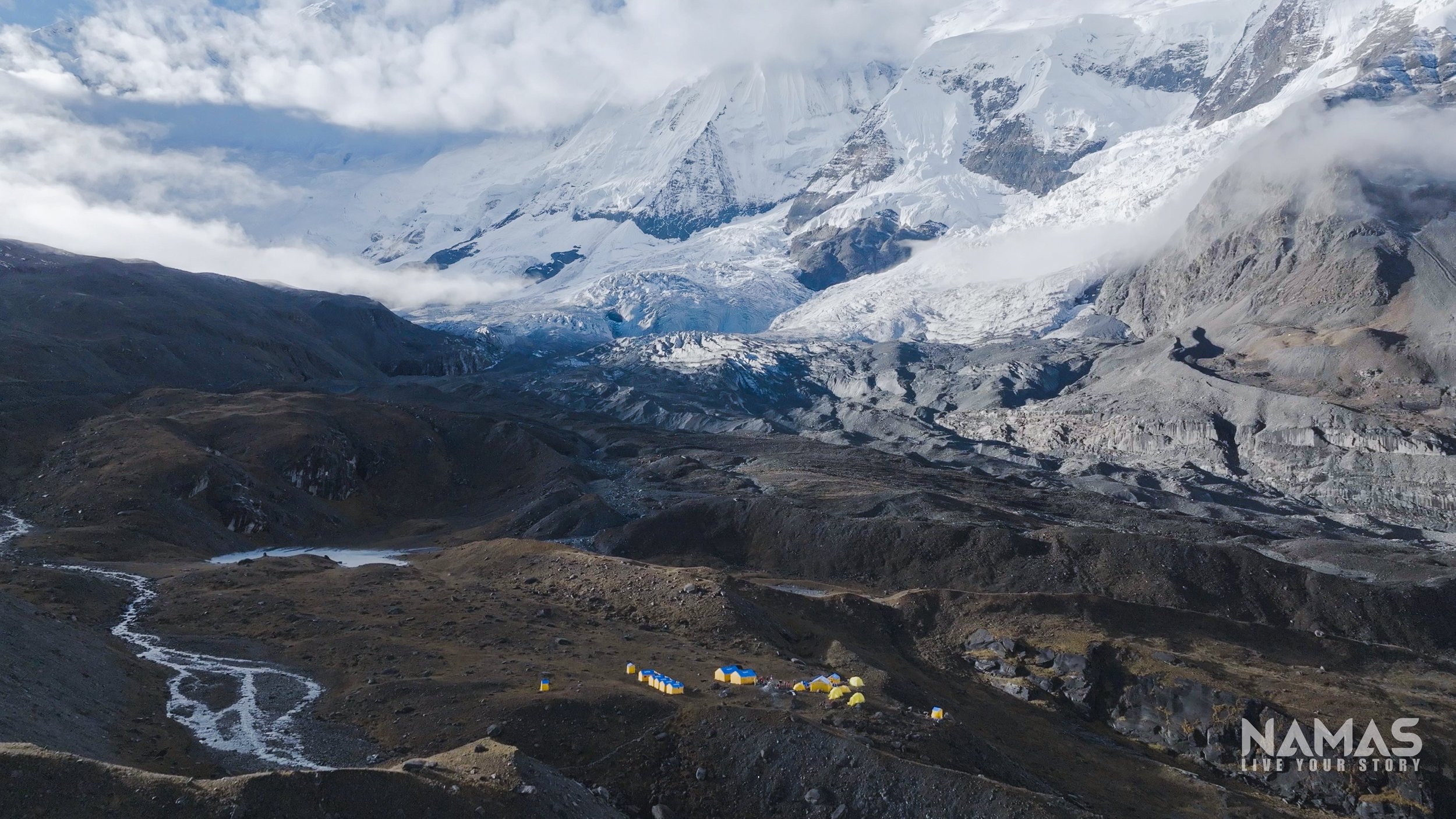
Route to Camp 1 5500M. 5 - 7 hours
Traversing the moraine glacier, climbers will ascend to the base of the mountain. The journey to Camp 1 entails a challenging ascent up a steep, rocky slope. To assist climbers, a fixed line will be established by the team, facilitating vertical climbs with inclines ranging from 60 to 80 degrees on sharp rock slabs. Negotiating this rugged terrain involves scrambling, jummaring, and traversing exposed sections of the mountain—a crucial initial technical phase of the ascent.
Expeditions conducted during the spring season should anticipate encountering a substantial amount of snow compared to expeditions in autumn.
Camp 1, 5500M
Route to Camp 2, 5500M - 5600M. 5- 6 hours
The ascent to Camp 2 commences with a challenging uphill climb of loose rocky terrain before climbers reach a designated crampon point. Here, team members secure their crampons in preparation for an 80-degree steep climb across icy and snowy terrain.
Climbing towards camp 2, the route carefully avoids areas prone to avalanches, it skirts the left side of the mountain, where avalanche activity is more common. Despite initial apprehensions, climbers can rest assured that the climbing route is designed with safety in mind and is not susceptible to avalanches. Although a few crevasses may be encountered along the way, they are manageable, either by navigating around them or making calculated leaps across. It is essential for climbers to remain securely attached to the fixed line throughout the ascent.
Offering breathtaking views of the Annapurna wall and the expansive glacier, this climb presents a picturesque and rewarding experience amidst the awe-inspiring scenery of the Himalayas.
Annapurna IV Camp 2 (5500M - 5600M)
Camp 2, 6500M
Situated on a compact, level expanse of the mountainside, this camp offers protection from strong winds originating from the north and northeast sections of the mountain range. Prepare to be captivated by the breathtaking panorama unfolding before you. From this vantage point, the majestic peak of Manaslu, towering at 8,163 meters, commands attention in the distant horizon. Additionally, the formidable wall of Annapurna II dominates the landscape, extending far into the leftward vista, where the impressive silhouettes of Himchuli and the Chulu ranges adorn the skyline..
View from camp 2. Annapurna II 7937M and Manaslu 8163M in the far distant.
Route to Camp 3 (6 - 7 hours)
Upon departing from Camp 2, climbers will immediately face a challenging ascent up the headwall, marked by a steep incline. Following the climb past two prominent boulders, climbers will encounter a sizable crevasse directly ahead. While manageable, this crevasse presents a notable obstacle, with plans for ladder crossings in future expeditions should the opening widen.
Upon successfully navigating the crevasse and ascending another incline, climbers will find themselves traversing across a vast expanse of snowfield. After approximately 1.5 to 2 hours of rigorous climbing, Camp 3 comes into view, offering a welcome respite amidst the stunning mountainous terrain.
Camp 3, 6600M
Positioned on the expansive shoulder of the mountain, Camp 3 offers 360 views of the surrounding mountains. Fishtail (Machhapucchre) mountain is directly to the north-east along with Annapurna 1 and south. With a sweeping view of a significant portion of the mountain directly ahead, climbers have the option to strategize their summit route either along the mountain's slopes or via its southern aspect. Given the complexity of this vast slope and the absence of marked routes typical of more commercialized mountains, the presence of experienced leaders and skilled route setters is imperative.
Navigating this terrain demands a high level of expertise, as the route may not be easily discernible, and few climbers are likely to traverse it. Additionally, certain areas may pose a risk of avalanches, underscoring the importance of proficiency in navigation and avalanche detection. With the guidance of seasoned professionals, climbers can confidently navigate the challenges of Camp 3 and proceed with their ascent toward the summit.
Annapurna IV Camp 3 6600M
The chaos to navigate to make it to the summit.
Route to Camp 4, (6 - 8 hours)
Embarking from Camp 3 towards Camp 4 involves traversing snowy fields and negotiating uphill slopes before descending across snow fields. The subsequent grueling ascent presents a continuous uphill climb toward the mountain's shoulder, requiring precise navigation skills from route setters.
This route offers teams two challenging options: a direct push to the summit from Camp 3, with an overnight stop at Camp 4 on the return, or a camp at Camp 4 followed by a summit push before returning to Camp 3. Camp 4, positioned at 7000 meters altitude on a flat surface, demands extra caution due to potentially windy conditions.
Camp 4 can be on the setup on the shoulder (middle) of the mountain.
true Summit of Annapurna IV 7525M to Camp 4 (7000M). 10-12 Hours
Climbers need to prepare themselves mentally for a lengthy, steep, and arduous journey to the summit. The ascent from Camp 3 to the summit and back typically spans 12-14 hours. Following departure from Camp 3, climbers face a daunting 1000-meter climb characterized by its steepness and length, making it a formidable challenge.
Safety measures include the installation of fixed lines along perilous and overhanging sections of the mountain walls. Weather permitting, summit views offer a breathtaking panorama encompassing the entire Annapurna massif range, including Annapurna I, II, III, Gangapurna, and Tilicho Peak, as well as prominent peaks like Manaslu (8163 meters), Machhpucchre, Ganesh Himal, and Dhaulagiri.
Upon completion of the summit, the objective is to return safely to Camp 4. Camp overnight, rest for a night and then an early downhill morning to base camp, which is expected to be a long 8-10 hours descend from the mountain, bringing our expedition to a conclusion.
Namas Adventure team members at Annapurna IV 7525M true summit. This one will be for life time memories. What a climb and pure test of grit, will and mental toughness.
Watch full Annapurna IV 7525M Expedition video
Feel inspired to embark on a 7525M remote expedition with not many climbers? Let us be your guide to remote mountain peaks in the Himalayan region, including the challenging Annapurna IV at 7525 meters. Our specialized team excels in safely accessing and navigating these pristine mountain territories, opening up new possibilities for exploration and discovery.
Visit our website for more information on our Annapurna IV expedition and our range of international expeditions. For booking inquiries, reach out to us at bookings@namasadventure.com.
Unleash the explorer within you, and climb where less has been.
LIVE YOUR STORY - NAMAS ADVENTURE TEAM
Which 7000M mountain peak should I climb? A Guide to Choosing Your next 7000M High-Altitude Adventure: Namas Adventure
With so many amazing options available, it can be difficult to decide which mountain to choose for your next high-altitude expedition. In this blog post, we will provide you with valuable insights and considerations to help you make an informed decision and select the perfect 7000M mountain peak for your climbing aspirations.
The first and foremost is to check your past climbing Experience and Skill Level: Before embarking on any high-altitude expedition, it is crucial to assess your climbing experience and skill level. While 7000M peaks are generally less demanding than their 8000M counterparts, they still require a solid foundation of mountaineering skills and high-altitude experience. Consider factors such as previous high-altitude climbs, technical proficiency, and your ability to adapt to extreme environments.
Easy and Safe - 7000er
Himlung Himal 7126M (Highest summit success in Nepal)
Himlung Himal (7126M) is a classic Himalayan expedition known for being one of the easiest and least technical 7000 meter+ mountains to climb (although it should not be underestimated). It has the highest recorded summit success rate (according to the Himalayan Database) compared to other peaks. Himlung Himal is also renowned as one of the safest climbable peaks with fewer technical difficulties. It is located in the same Himalayan belt as other giants like Manaslu and the Annapurna massif, so you can expect stunning views of the surrounding peaks from the summit.
Expedition Highlights
Elevation: 7126M
Difficulty: 4/PD (Alpine grade link)
High camps: 2 to 3 high camps
15 days of climbing
Considered one of the safest, easiest 7000M+ expeditions with the highest recorded summit success in Nepal
Towering at 7,134 meters along the border between Kyrgyzstan and Tajikistan, Lenin Peak presents an excellent introduction to high-altitude mountaineering above 7,000 meters. Considered one of the more straightforward ascents at this elevation range, it serves as ideal preparation for attempting the Himalayan giants to 7500M or 8,000-meter peaks.
Also named Pik Lenin, this expedition begins in the ancient city of Osh in southern Kyrgyzstan, which radiates a palpable sense of history as the country's second-largest city and oldest continuously inhabited settlement. Home to approximately 250,000 residents, Osh's diverse blend of Uzbeks, Kyrgyz, Russians, and Tajiks infuses the architecture, language, and cuisine with rich cultural elements. Much as it did 3,000 years ago along the Silk Road, Osh still serves as a thriving trading hub connecting Central Asia and China. This gateway city marks the start of the journey before venturing into the high mountains.
Expedition Highlights
Elevation: 7134M
Preparatory climb for 7500M or lower 8000M peaks
One of the least technical 7000M mountain
Difficulty: AD/ 4 (Alpine grade link)
High camps: 3 high camps
Can be your first 7000M+ expedition
Mount Nun is the preeminent peak within the Nun Kun massif situated in the mighty Zanskar Range of the Indian Himalayas. This iconic mountain range, nestled in the Leh Ladakh region, contains two eminent peaks: the lofty Mount Nun at 7,135 meters, the highest summit in the area, and its slightly shorter companion, Mount Kun at 7,077 meters.
A successful ascent of Mount Nun presents ambitious climbers with a prime opportunity to garner invaluable high-altitude mountaineering skills on a classic Himalayan expedition, paving the way for future ascents of even more demanding 7,500 meter or 8,000 meter giants.
Expedition Highlights
Elevation: 7135M
Difficulty: AD/4 (Alpine grade link)
High camps: 3 high camps
12 days of climbing
Can be your first 7000M climb
Spantik 7027M, the majestic peak in the Karakoram region. This expedition is considered straightforward and less technical and offers an excellent opportunity to challenge yourself at altitudes above 7,000 meters while immersing in the beauty of the mountain area, its warm-hearted people, and its captivating culture. With a well-organized expedition, Spantik provides an affordable and rewarding climbing experience, making it a fantastic choice for mountaineers seeking both adventure and cultural exploration. Don't miss the chance to conquer this stunning peak and create unforgettable memories in the enchanting Karakoram.
Expedition Highlights
Elevation: 7027 M
Difficulty: AD/4 (Alpine grade link)
High camps: 3 high camps
15 days of climbing
Can be your first 7000M climb
Baruntse Peak is another attainable 7,000-meter summit in the Himalayas. This expedition is slightly technical and challenging climb compared to the above-mentioned expeditions. Situated amongst giants like Lhotse, and Makalu, Baruntse lies embedded within a stunning panorama of jagged Himalayan peaks. Its accessibility provides climbers with an unparalleled opportunity to develop critical mountaineering skills and high-altitude experience to prepare for future ascents of more demanding summits.
Expedition Highlights
Elevation: 7129M
Difficulty: 4/PD (Alpine grade link)
High camps: 2 to 3 high camps
15 days of climbing
Safe, challenging, and technical sections. Definitely an epic climb
Technical and Challenging 7000er
Annapurna IV 7525M (Prepare for Everest)
Annapurna IV presents the ideal mountaineering objective for climbers seeking a balance of challenge and relative safety. Part of the mighty Annapurna range in Nepal, Annapurna IV lies between the taller Annapurna II (7,937m) to the west and Annapurna III (7,555m) to the east. The established route up Annapurna IV poses fewer objective hazards and is a relatively semi-technical ascent compared to its neighbors. Of the Annapurna peaks (I, II, III, IV, and Gangapurna), Annapurna IV is considered the least dangerous and technically demanding. Despite its accessible profile, this mountain sees far less traffic than other regional giants. For climbers pursuing a balance of adventure and prudent risk, Annapurna IV stands out as an excellent choice.
Expedition Highlights
Elevation: 7525M
Preparatory climb for Everest or other 8000M expedition
Difficulty: 4/D (Alpine grade link)
High camps: 3 high camps
21 days of climbing
Challenging, and technical expedition. Should not be your first 7000er climb.
Pumori 7161m
Mount Pumori will test climbers' endurance and technical skills, though the rewards overwhelmingly compensate for the required effort. Part of the Mahalangur Himal section of the Himalayan range, Pumori lies between the Nangpa La Pass and Arun River, surrounded by giants like Everest, Lhotse, Makalu and Cho Oyu. Considered a technically demanding expedition, Pumori requires climbers to have sufficient high-altitude experience and fitness. Due to exposed ridges and several avalanche-prone sections, small groups are ill-advised. Instead, an adequately sized team is needed to establish ropes and navigate tricky passages. With relentless steepness testing both physical and mental reserves, Pumori lures only the most determined risk-takers equipped with seasoned technical expertise. For those up for the challenge, Pumori promises immense satisfaction in conquering one of the region's toughest peaks.
Expedition Highlights
Elevation: 7161M
Preparatory climb for Everest or other 8000M expedition
Difficulty: 4/E (Alpine grade link)
High camps: 3 high camps
18 - 20 days of climbing
Challenging, and technical expedition. Should not be your first 7000er climb.
With careful evaluation of your skills, experience, risk tolerance, and personal goals, you can identify the ideal 7000M mountain for your next high-altitude expedition. Do your research, inquire and consult with our team, build up your fitness, prepare your gear, and make sure you join a responsible, skilled team. The thrills of standing atop one of these iconic peaks make all the rigorous training and planning worthwhile. Whichever incredible mountain you choose, cherish and be prepared for a life-changing adventure amid some of the most dramatic landscapes on Earth. With the right preparation and positive mindset, you will return home with memories to last a lifetime.
Let’s welcome you to our yearly departure team and scale to the top of these mountains while making this an epic experience of a lifetime. Our team is ready to hear from you and help you achieve your dream adventure.
Namas Adventure Team
Live Your Story






